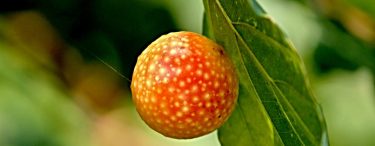by ECWA USA | Plants don’t get cancer the way we think of cancer in human and the tumor on plant do not metastasis or spread like the one found on living tissues since they are surrounded and anchored in place by a hard outer back of tree or stem.

The bacterium Agrobacterium tumefaciens has been known to cause gall. Galls are lumps, bumps and uncontrolled growths that develop on different parts of plants after an infection and look more like what we will call a tumor. Other causes of galls includes viruses, fungi, bacteria, insects and mites. It’s very hard to believe, but galls appear on several of the plant-families than one may think. To answer the question, plants don’t get cancer the way we think of cancer in human and the tumor on plant do not metastasis or spread like the one found on living tissues since they are surrounded and anchored in place by a hard outer back of tree or stem.
There are several scientists around the world that devoted their life to studying plant galls and they are called Cecidologist. The study of plant galls is called cecidology. When the galls are dissected, and we take a closer look under the microscope, a fascinating and remarkable micro-world opens up. Galls are of different shapes and sizes and exhibit an incredible biodiversity (i.e. the variety of life) in every ecosystem and all around the world.
References
Anon. Witches’ Broom Accessed January 2011
British Plant Gall Society
Byers, J.A. Gall-making insects Accessed December 2010
Stone, N.G., Schönrogge, K., Atkinson, R.J., Bellido, D., Pujade-Villar, J. (2002). The Population Biology of Oak Gall Wasps (Hymenoptera: Cynipidae). Annual Review of Entomology, Vol. 47: 633-668
http://en.wikipedia.org/wiki/Neuroterus_quercusbaccarum Accessed February 2011